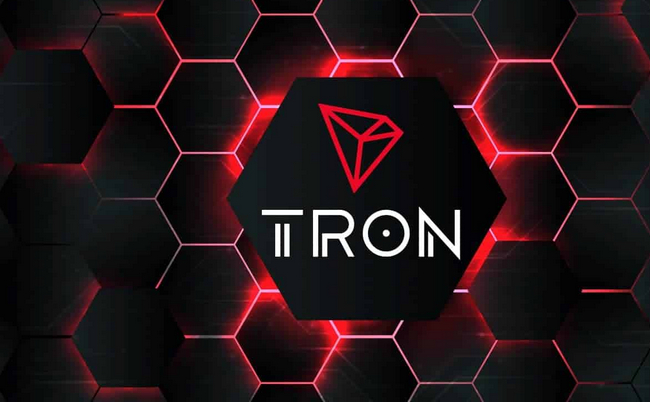-
 Bitcoin
Bitcoin $104,003.5466
-0.37% -
 Ethereum
Ethereum $2,509.6207
-1.35% -
 Tether USDt
Tether USDt $1.0000
0.01% -
 XRP
XRP $2.3649
-2.52% -
 BNB
BNB $649.7504
-1.60% -
 Solana
Solana $172.7785
-3.69% -
 USDC
USDC $0.9999
-0.01% -
 Dogecoin
Dogecoin $0.2328
-4.69% -
 Cardano
Cardano $0.8010
-2.35% -
 TRON
TRON $0.2649
0.16% -
 Sui
Sui $4.0169
-2.56% -
 Chainlink
Chainlink $16.9119
-0.74% -
 Avalanche
Avalanche $24.5717
-2.89% -
 Stellar
Stellar $0.3073
-2.94% -
 Shiba Inu
Shiba Inu $0.0...01594
-3.55% -
 Pi
Pi $1.2980
65.57% -
 Hedera
Hedera $0.2054
-4.81% -
 Toncoin
Toncoin $3.4126
-2.65% -
 Hyperliquid
Hyperliquid $24.4102
-6.42% -
 Bitcoin Cash
Bitcoin Cash $405.1250
-5.06% -
 Polkadot
Polkadot $5.0381
-1.88% -
 UNUS SED LEO
UNUS SED LEO $8.3301
1.17% -
 Litecoin
Litecoin $99.8172
-4.40% -
 Monero
Monero $332.1482
2.12% -
 Pepe
Pepe $0.0...01393
5.92% -
 Bitget Token
Bitget Token $4.8959
-1.00% -
 Dai
Dai $0.9999
0.00% -
 Ethena USDe
Ethena USDe $1.0001
-0.01% -
 Uniswap
Uniswap $6.8655
-5.45% -
 Bittensor
Bittensor $467.4490
0.82%
how to withdraw tron to bank account
Initiating a TRON withdrawal involves selecting a reputable exchange, verifying your identity, adding your bank account details, initiating the withdrawal, and monitoring the transaction status.
Nov 06, 2024 at 09:47 am

How to Withdraw TRON to Bank Account: A Comprehensive Guide
Withdrawing TRON (TRX) from a blockchain wallet or exchange into a bank account involves a series of steps to ensure a secure and successful transaction. This detailed guide will provide comprehensive instructions on how to withdraw TRON to your bank account.
Step 1: Choose a Reputable Exchange
The first step in withdrawing TRON to a bank account is to select a reputable crypto exchange that supports this functionality. Consider factors such as exchange fees, security measures, and customer support when selecting an exchange. Coinbase, Binance, and Kraken are some popular exchanges that offer TRON withdrawals to bank accounts.
Step 2: Verify Your Identity
To ensure compliance with anti-money laundering (AML) and know-your-customer (KYC) regulations, most exchanges require users to verify their identity before allowing withdrawals. This process typically involves submitting personal information such as a government-issued ID, proof of address, and sometimes a selfie.
Step 3: Add Bank Account Information
Once your identity is verified, you need to add your bank account information to the exchange. This includes providing the bank name, account number, and routing number (for US bank accounts). Ensure that the account you provide matches the name on your exchange account.
Step 4: Initiate TRON Withdrawal
Navigate to the withdrawal section of the exchange and select TRON (TRX) as the asset you want to withdraw. Enter the TRX amount you wish to withdraw, the bank account you want to send it to, and any other required details. Carefully review the withdrawal details to ensure accuracy before confirming the transaction.
Step 5: Transaction Processing
Once the withdrawal request is initiated, the exchange will process the transaction. The processing time can vary depending on the exchange's policies and network congestion. Typically, it can take several hours or up to a few days for the funds to reach your bank account.
Step 6: Monitor Transaction Status
You can monitor the status of your withdrawal request through the exchange's transaction history. It will provide updates on the transaction status, such as "pending," "processing," or "completed." If the transaction takes longer than expected, you can contact the exchange's customer support for assistance.
Step 7: Confirm Funds Received
When the withdrawal is complete, check your bank account to confirm that the funds have arrived. The deposited amount should match the TRX withdrawal amount you initiated, minus any exchange fees. If the funds do not appear in your account within the estimated time frame, contact your bank and the exchange to resolve the issue.
Additional Considerations
- Exchange Fees: Exchanges charge varying fees for TRX withdrawals to bank accounts. Consider these fees when choosing an exchange and compare the rates before making the withdrawal.
- Bank Processing Time: Banks may take additional time to process incoming wire transfers, especially during weekends or holidays. Be patient and allow extra time for the funds to show in your account.
- Security Precautions: Keep your exchange account and bank account details confidential and use strong passwords to prevent unauthorized withdrawals.
Disclaimer:info@kdj.com
The information provided is not trading advice. kdj.com does not assume any responsibility for any investments made based on the information provided in this article. Cryptocurrencies are highly volatile and it is highly recommended that you invest with caution after thorough research!
If you believe that the content used on this website infringes your copyright, please contact us immediately (info@kdj.com) and we will delete it promptly.
- Bitcoin hits $100K as institutional money pours in, a royal bitcoin drain, two U.S. States Enact Strategic Bitcoin Reserve Legislation
- 2025-05-12 10:20:13
- The Year is 2025. You Have $1,000. Do You Buy XRP or PEPE?
- 2025-05-12 10:20:13
- Today 958 U, May 11, 2025
- 2025-05-12 10:15:12
- The post Pi Network Price Crosses $1 Mark: How to Mine Pi Coins?
- 2025-05-12 10:15:12
- ⚠️ Mega Week Incoming: Market Movers That Could Shake Everything ⚠️
- 2025-05-12 10:10:12
- $TRUMP Token: Could It Reach 100 in the Next 30 Days?
- 2025-05-12 10:10:12
Related knowledge

What is Ethereum’s Slashing mechanism and how to punish malicious behavior?
Feb 20,2025 at 03:08am
Key PointsOverview of slashingDifferent types of slashing in EthereumIncentives and consequences of slashingIdentifying and reporting slashed validatorsOngoing discussions and potential improvementsEthereum's Slashing Mechanism: Punishing Malicious BehaviorEthereum's slashing mechanism is an essential tool for ensuring network security and punishing mal...

What is the verifier node of Ethereum and how to become a verifier?
Feb 19,2025 at 06:00pm
The Verifier Node of Ethereum: A Comprehensive GuideKey Points:What is a Verifier Node?How to Become a Verifier NodeResponsibilities and Rewards of a Verifier NodeMinimum Requirements for Becoming a Verifier NodePotential Difficulties in Running a Verifier Node1. What is a Verifier Node?A Verifier Node is an independent entity on the Ethereum network th...

What is Ethereum’s staking, and how to participate and earn money?
Feb 19,2025 at 04:37pm
Key Points:Understanding Ethereum's Staking MechanismSteps to Participate in StakingBenefits and Rewards of StakingSecurity and Risk ConsiderationsTechnical Requirements and Hardware OptionsPotential Challenges and Troubleshooting TipsFAQs on Ethereum StakingWhat is Ethereum's Staking?Proof-of-Stake (PoS) is a consensus mechanism used in blockchain netw...

What is Ethereum’s DAO (Decentralized Autonomous Organization) and how does it work?
Feb 20,2025 at 03:12am
Key PointsDefinition and Structure of a DAOGovernance and Decision-Making in DAOsBenefits and Use Cases of DAOsChallenges and Limitations of DAOsWhat is Ethereum's DAO (Decentralized Autonomous Organization) and How Does It Work?Definition and Structure of a DAOA Decentralized Autonomous Organization (DAO) is an innovative governance and management fram...

What is Ethereum's multi-signature wallet and how to improve security?
Feb 20,2025 at 02:18pm
Key Points:Understanding the Concept of a Multi-Signature WalletBenefits and Drawbacks of Multisig WalletsRequirements for Setting Up a Multisig WalletStep-by-Step Guide to Generating a Multisig WalletImplementing Strategies for Enhanced Security1. Understanding the Concept of a Multi-Signature WalletA multi-signature (multisig) wallet in the Ethereum e...

What is Ethereum's oracle and how to provide data for smart contracts?
Feb 21,2025 at 01:30am
Key Points:Understanding the concept of oracles in EthereumExploring different types of oraclesDetailed guide on how to provide data for smart contractsAddressing potential challenges and considerationsWhat is Ethereum's Oracle?Oracles are crucial components in the Ethereum ecosystem, enabling smart contracts to access real-world data and off-chain even...

What is Ethereum’s Slashing mechanism and how to punish malicious behavior?
Feb 20,2025 at 03:08am
Key PointsOverview of slashingDifferent types of slashing in EthereumIncentives and consequences of slashingIdentifying and reporting slashed validatorsOngoing discussions and potential improvementsEthereum's Slashing Mechanism: Punishing Malicious BehaviorEthereum's slashing mechanism is an essential tool for ensuring network security and punishing mal...

What is the verifier node of Ethereum and how to become a verifier?
Feb 19,2025 at 06:00pm
The Verifier Node of Ethereum: A Comprehensive GuideKey Points:What is a Verifier Node?How to Become a Verifier NodeResponsibilities and Rewards of a Verifier NodeMinimum Requirements for Becoming a Verifier NodePotential Difficulties in Running a Verifier Node1. What is a Verifier Node?A Verifier Node is an independent entity on the Ethereum network th...

What is Ethereum’s staking, and how to participate and earn money?
Feb 19,2025 at 04:37pm
Key Points:Understanding Ethereum's Staking MechanismSteps to Participate in StakingBenefits and Rewards of StakingSecurity and Risk ConsiderationsTechnical Requirements and Hardware OptionsPotential Challenges and Troubleshooting TipsFAQs on Ethereum StakingWhat is Ethereum's Staking?Proof-of-Stake (PoS) is a consensus mechanism used in blockchain netw...

What is Ethereum’s DAO (Decentralized Autonomous Organization) and how does it work?
Feb 20,2025 at 03:12am
Key PointsDefinition and Structure of a DAOGovernance and Decision-Making in DAOsBenefits and Use Cases of DAOsChallenges and Limitations of DAOsWhat is Ethereum's DAO (Decentralized Autonomous Organization) and How Does It Work?Definition and Structure of a DAOA Decentralized Autonomous Organization (DAO) is an innovative governance and management fram...

What is Ethereum's multi-signature wallet and how to improve security?
Feb 20,2025 at 02:18pm
Key Points:Understanding the Concept of a Multi-Signature WalletBenefits and Drawbacks of Multisig WalletsRequirements for Setting Up a Multisig WalletStep-by-Step Guide to Generating a Multisig WalletImplementing Strategies for Enhanced Security1. Understanding the Concept of a Multi-Signature WalletA multi-signature (multisig) wallet in the Ethereum e...

What is Ethereum's oracle and how to provide data for smart contracts?
Feb 21,2025 at 01:30am
Key Points:Understanding the concept of oracles in EthereumExploring different types of oraclesDetailed guide on how to provide data for smart contractsAddressing potential challenges and considerationsWhat is Ethereum's Oracle?Oracles are crucial components in the Ethereum ecosystem, enabling smart contracts to access real-world data and off-chain even...
See all articles





















































































